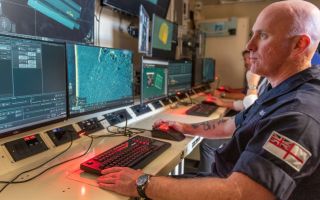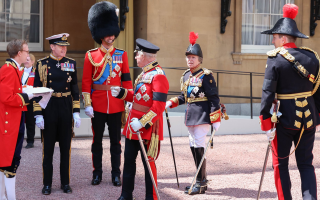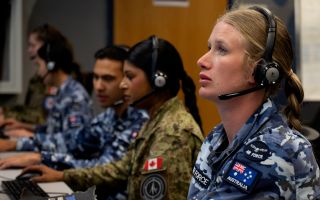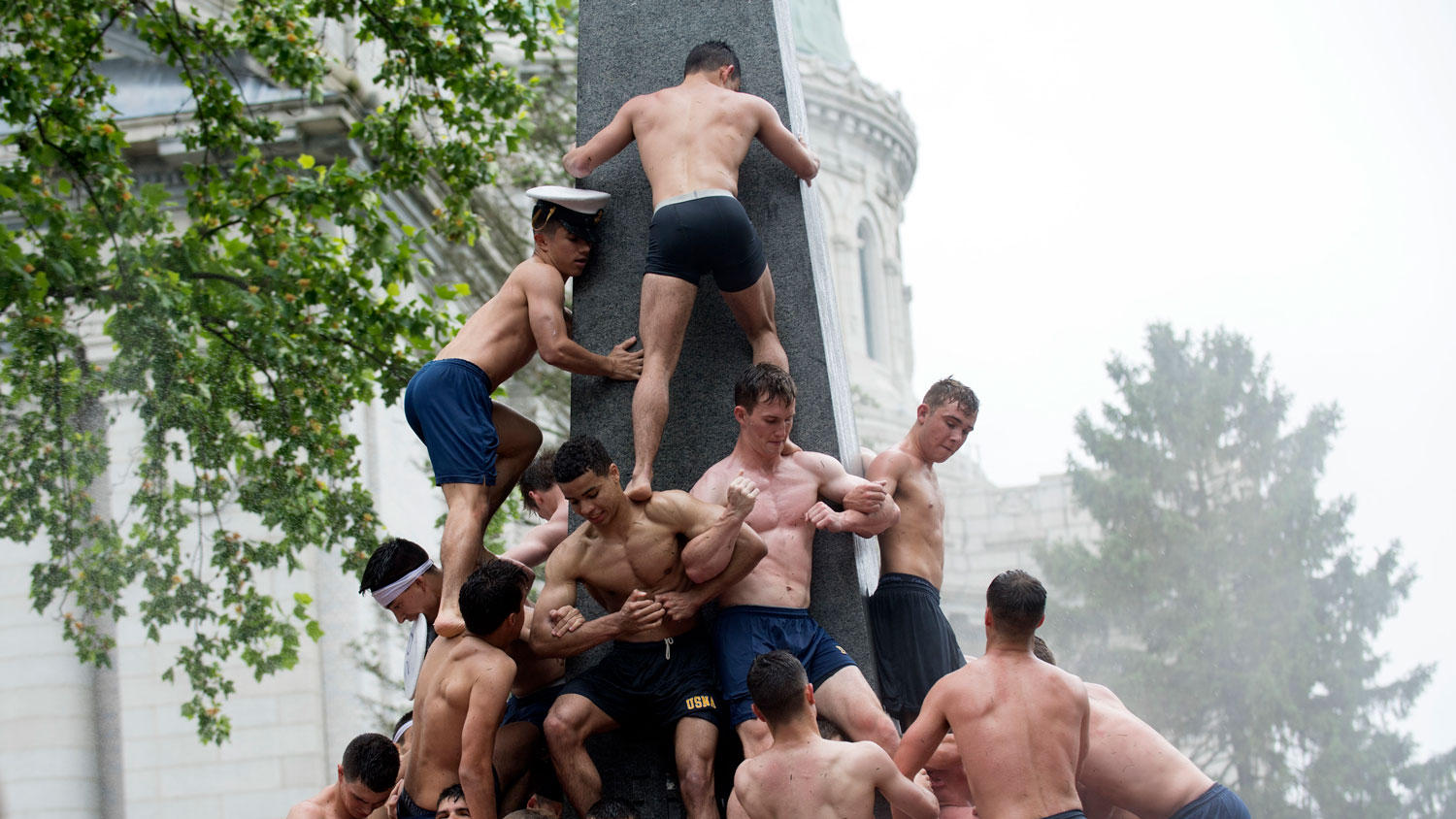
From grease to glory: Unique tradition of Plebes No More ceremony at US Naval Academy

The Plebes No More ceremony, a greasy and chaotic US Navy tradition that symbolises the end of the midshipmen's first year, has been a point of pride for aspiring naval personnel since the Second World War.
The Herndon Monument Climb began in 1940 when US Naval Academy first-year students – known as midshipmen or plebes – celebrated graduating by scaling the 21-foot-high granite obelisk, but an addition to the tradition in 1949 transformed the event into a unique military custom.
The culmination of plebe year now sees first-year students take on the challenge of climbing up the monument after it has been covered from top to toe with about 14 stone of solid vegetable oil fat by midshipmen of the 1st Company – no small feat.
To prove their ability to work as a team and persevere through adversity, the plebes must work together and form a human pyramid, while also being hosed down with water, to enable one person to remove a dixie cup – the iconic white hat worn by US Navy personnel – at the top of the monument and replace it with an upperclassman's hat.
This gruelling, labour-intensive act signifies the transformation of plebes – of which this year there were about 1,300 – to fourth class midshipmen.
Legend has it that the plebe who manages to replace the dixie cup will be the first in their class to become an admiral.
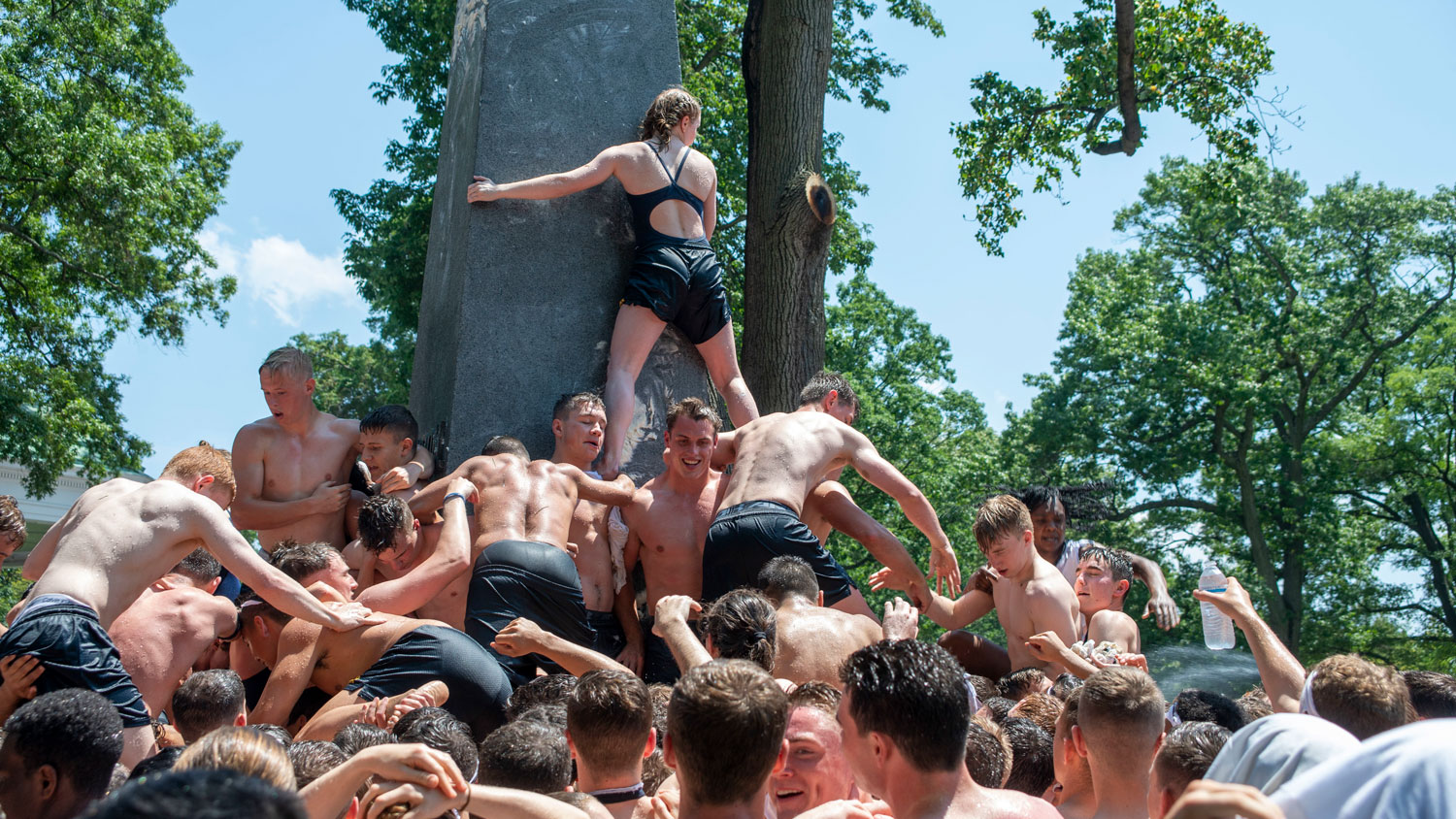
However, according to the US Naval Academy, this prophecy has never been fulfilled in the history of the Herndon Monument Climb.
The speed at which plebes ascend the monument was first recorded in 1962 and noted down as 12 minutes, whereas the fastest was 1972, when the granite obelisk was scaled in one minute and 30 seconds.
However, no grease was added to the monument that year, so that figure does not really count.

The longest the tradition took was the class of 1998 who managed to remove the dixie cup in four hours and five minutes.
Once again though, the rules had been messed around with as the dixie cup had, rather unfairly, been glued and taped to the monument.
This year, plebe Ben Leisegang, 20, managed to replace the dixie cup with the upperclassman's hat in two hours, 19 minutes and 11 seconds.
Who is the Herndon Monument named after?
The monument is a tribute to Commander William Lewis Herndon, whose heroism while captaining the 280ft steamship SS Central America in September 1857 helped save the lives of 149 of the 572 people on board.
The civilians and crew were on board to transport several tonnes of California Gold Rush coins and nuggets from Colón in Panama to New York City.
However, the journey of those on board was cut short by a brutal three-day hurricane off the coast of Cape Hatteras, North Carolina.
As the boat began to sink, Cdr Herndon calmly took control of the situation. He organised a line of people to bail water in an attempt to delay the sinking and ensured women and children safely made their way to the ship's five lifeboats.
Adamant as many people were to be saved as possible, Cdr Herndon refused to leave the sinking ship until he was satisfied no more could be done.
US Naval History and Heritage Command wrote this of the naval hero's actions that night, saying: "As one of the last boats left the sinking ship, Captain Herndon gave his watch to a passenger with a request that it might be delivered to his wife.
"He tried to send her a message, but the only words he could say were 'Tell her...'
"After this, he went to his stateroom, put on his uniform, removed the oilskin covering which concealed the band around his cap, threw it on deck, took his stand by the wheel-house, holding on by the rail with his left hand.
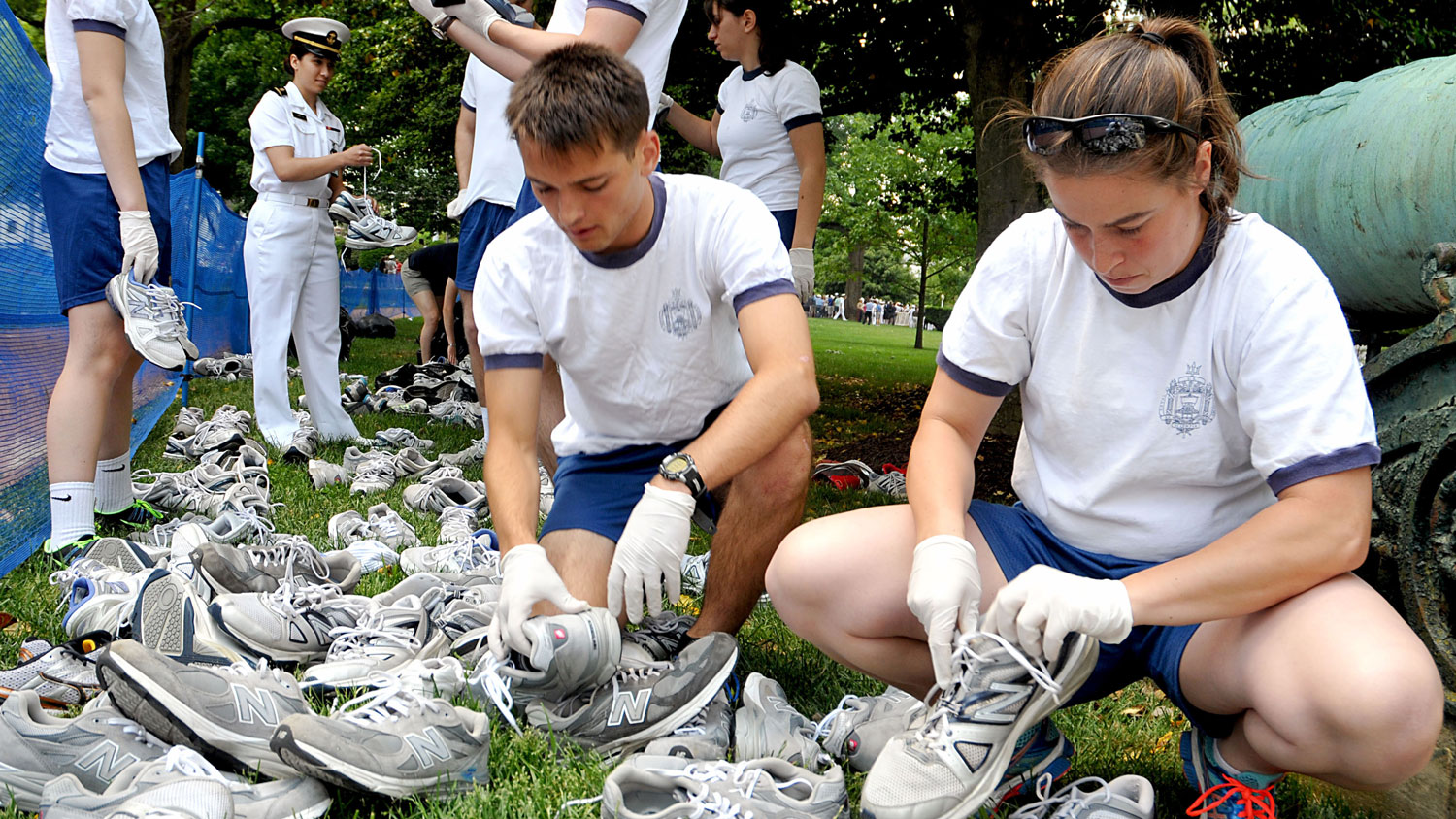
"A rocket was sent up, the ship gave a last lurch; as she went down, he uncovered."
In the spirit of Cdr Herndon's generous actions that night, a relatively new charitable tradition has been added to the Herndon Monument Climb.
Before the event begins, plebes take off their trainers so they can be donated to charities through the Midshipman Action Group, a programme focused on community relations, providing opportunities for volunteers to take part in educational, environmental and social service projects.




